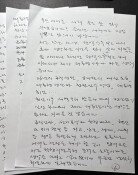Every government lies in disasters without exception
Every government lies in disasters without exception
Posted January. 06, 2025 08:02,
Updated January. 06, 2025 08:02
On December 31, 2024, Kim Hong-rak, director general of the Airport Policy Division at the Land, Infrastructure, and Transport Ministry, addressed the "concrete embankment" controversy during a briefing on the Muan-Jeju air crash. He stated, "Since it was outside the runway end safety area of the airport, there were no material restrictions, so a concrete structure was installed." Kim made this remark amid growing criticism over why the embankment the airliner struck was present and why it was made of concrete despite regulations requiring the use of "frangible material." "You have to consider the international regulations," Kim said, pointing to differences in the interpretation of the terms "including" and "up to" in English. The official’s focus on the interpretation of these terms in the context of determining the cause of the disaster, which claimed 179 lives, revived uneasy memories of similar incidents in the past.
On April 16, 2014, the day of the sinking of the ferry Sewol, the Korean Coast Guard announced the next day that a massive search for missing persons was underway with the SSU and UDT. However, according to data released by the Ministry of National Defense, they were unable to enter the sea due to strong currents. Then-Coast Guard Chief Kim Seok-gyun told the families of the missing that more than 500 divers had been deployed. Then-Oceans and Fisheries Minister Lee Ju-young was reportedly informed that only eight divers were deployed.
The Itaewon Halloween crowd crush occurred on October 29, 2022. The next day, then-Minister of the Interior and Safety Sang-min Lee claimed that "the crowd was not particularly large enough to cause concern." However, it was later revealed that numerous 112 calls had been made to the police about the large crowd shortly before the incident. The Board of Audit and Inspection had internally decided to audit the incident but falsely stated during a public briefing that it had "no specific plans" to do so. Observers suggest that concerns about the pressure it would place on the administration influenced this response.
In 1964, American journalist Isidor Feinstein Stone exposed the U.S. government's falsification of the Gulf of Tonkin incident during the Vietnam War. At the time, most of the U.S. media reported the government's version of events verbatim, but Stone published a four-page article in his weekly newspaper, I.F. Stone's Weekly, asserting that the government's account was false. In 1971, classified U.S. Department of Defense documents confirmed that Stone's report was accurate. In her biography of Stone, “All Governments Lie,” Myra MacPherson, a former Washington Post reporter, wrote: “Stone focused on the confusion, factual inconsistencies, and oddities in government accounts.”
The truth about the Jeju Air crash is still a long way off. Questions about how the concrete mound existed and who was involved are also piling up. In the past, whenever the government has found itself linked to the cause or effect of a tragedy, it has tried to scrub away any trace of responsibility with incomprehensible rhetoric, vague explanations, and false statements.
The public and bereaved families had hoped that the ministry would use its authority and expertise to hold the responsible former and current ministry officials accountable “up to” the truth of the disaster. However, every announcement from the ministry these days raises more questions. Perhaps they shouldn’t be the ones investigating the accident but should instead be “included” as subjects of responsibility and punishment.







